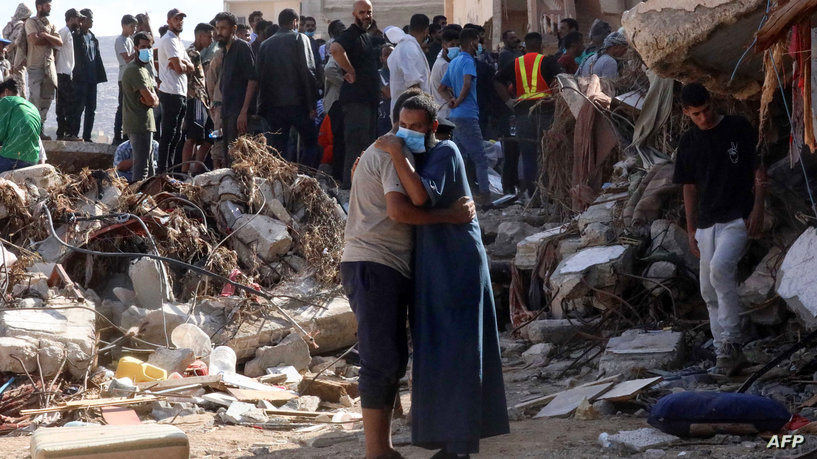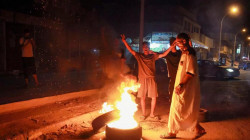Mass graves and rising public anger as thousands of flood victims in eastern Libya remain unburied

Shafaq News/ Rescue workers in eastern Libya continue to bury thousands of flood victims in mass graves, sparking rising public anger and international concern.
Experts, including the World Health Organization (WHO), have pointed out that insufficient evacuation efforts before the storm and the failure to maintain a crucial dam contributed to the high death toll.
On Thursday, the Libyan Red Crescent announced that the death toll from the floods in Derna, eastern Libya, had reached 11,300 people. However, a local official expects the number to rise significantly.
Marai Al-Darsi, the Secretary-General of the relief organization, revealed to the Associated Press that there are "more than 10,000 missing people" in the coastal city.
The mayor of Derna, Abdel Moneim Al-Ghaithi, expressed his concern that the death toll in the city "may reach between 18,000 and 20,000" based on the extent of the damage. He fears the possibility of an epidemic due to the large number of bodies under rubble and in the water.
The WHO and other relief organizations have called on Libyan authorities to "stop burying flood victims in mass graves." Kazunobu Kojima, Medical Officer for biosafety and biosecurity in WHO's Health Emergencies Programme, stressed the importance of improving the management of burial operations and conducting individual burials in specific, well-documented cemeteries.
The statement issued jointly by WHO, the International Committee of the Red Cross, and the International Federation of Red Cross and Red Crescent Societies warned against hasty mass burials, which can lead to long-term psychological problems for families and social and legal issues. The statement emphasized that bodies of flood victims do not pose health threats except near freshwater sources.
The United Nations World Meteorological Organization has also pointed out that "most of the casualties could have been avoided" if adequate evacuation efforts had been carried out before the storm. Mismanagement and insufficient preparedness have been identified as contributing factors to the devastating impact of the floods.
Terrifying scenes of destruction and loss have overwhelmed Derna, which has around 100,000 people. The collapse of key dams in the region highlighted the longstanding infrastructure neglect in Libya since the overthrow of Muammar Gaddafi in 2011. Experts and authorities have been criticized for lacking preventative measures and timely evacuation orders, which could have saved lives.
Libya has been mired in conflict and chaos for over a decade, neglecting critical infrastructure and public safety concerns. With thousands of victims still unburied and widespread devastation, the city of Derna faces a long and challenging road to recovery.





